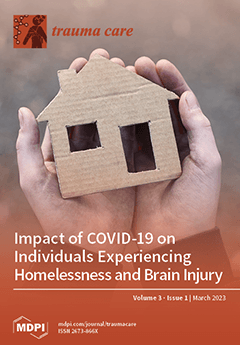Introduction: Potassium Permanganate (KMnO
4) is an uncommon cause of caustic ingestion in teenagers and adults; only case reports are found in the recent literature. At Ngwelezana Hospital in South Africa, KMnO
4 ingestion is not an uncommon indication for admission. KMnO
[...] Read more.
Introduction: Potassium Permanganate (KMnO
4) is an uncommon cause of caustic ingestion in teenagers and adults; only case reports are found in the recent literature. At Ngwelezana Hospital in South Africa, KMnO
4 ingestion is not an uncommon indication for admission. KMnO
4 is readily available as used in most households and recommended for medicinal purposes by traditional health practitioners. Aim: To ascertain the reasons for KMnO
4 ingestion, the extent and severity of injury as determined by upper gastro-intestinal studies, and patient outcomes in comparison with the available global literature. Methods: We performed a retrospective study of 26 teenage and adult patients, admitted to our adult wards following KMnO
4 ingestion. Data collected on patient demographics, reason for KMnO
4 ingestion, and quantity ingested. Oral inspection and upper gastro-intestinal study findings recorded with grading (Zargar) of corrosive injury to oesophagus and stomach. Patients’ outcome and duration of hospital stay documented. Results: There were 73% females and 27% males, with an average age of 23 years. Reasons for ingestion included parasuicide (84%), accidental ingestion (8%), and for relief of abdominal pain (8%). The vast majority (96%) swallowed KMnO
4 in solution rather than in solid form. The volume and concentration of KMnO
4 taken was difficult to quantify. Oral discoloration, oedema, and ulceration were found in 58%. Gastro-intestinal endoscopy was performed in 92%; abnormalities were demonstrated in 68% (oesophageal injury 14%, oesophageal and gastric injuries 14%, gastric injury alone 41%). Oesophageal injuries:
n = 6; Zargar grade 1—83%, Zargar grade 2A—17%. Gastric injuries:
n = 12; Zargar grade 1—42%, Zargar grade 2A—33%, Zargar grade 2B—25%. Average hospital stay was 2.9 days (range 2–8 days). There were no mortalities and no complications at 6 weeks. Conclusion: KMnO
4 ingestion by teenagers and adults is not uncommon in our setting, mostly related to suicide attempts and most often taken in liquid form. KMnO
4 was possibly of a low concentration as no systemic complications were noted and there were milder gastric and oesophageal injuries as compared to case reports from elsewhere of mucosal necrosis following ingestion of KMnO
4.
Full article



